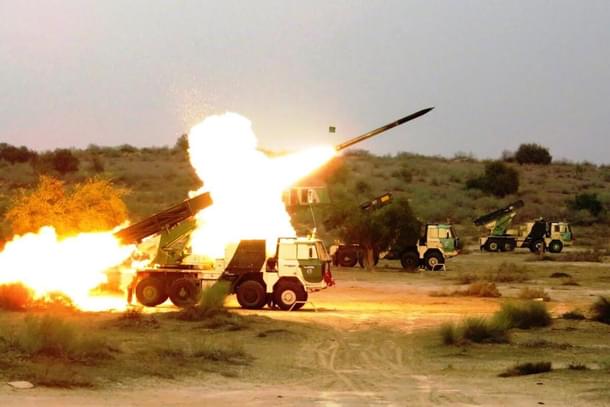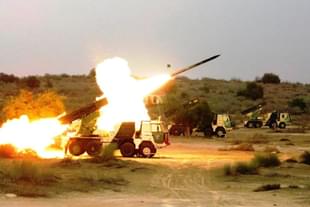News Brief
Gunning For Self-Sufficiency: Indian Army Finalises 10-Year Ammunition Procurement Plan Amid Global Conflicts
Swarajya News Staff
Nov 26, 2023, 10:06 AM | Updated 10:06 AM IST
Save & read from anywhere!
Bookmark stories for easy access on any device or the Swarajya app.


In the context of the Ladakh stand-off and the conflict in Ukraine, defence sources have told The Hindu about the establishment of a comprehensive plan for ammunition procurement, with a decade-long requirement already finalised.
This move is part of measures to ensure the security of supply chains and prevent any disruption to operational readiness.
Sources have reportedly indicated that approximately 85 per cent of the ammunition requirement has been domestically produced, incorporating contributions from both public and private sectors.
“The aim is to build up ammunition stocks to desired levels, minimise imports and achieve self-sufficiency in the country, have multiple sources of supply, and possess indigenous manufacturing capability,” a defence source in the know told The Hindu.
“First step is to indigenise all import-dependent ammunition — major platforms with long-term requirement.”
In this context, over 30 different versions are currently being indigenised, equating to roughly Rs 16,000 crore.
Additionally, five to six types of ammunition have been pinpointed for domestic production, which will broaden the local vendor base, according to the source.
Subsequently, the identification of next-generation high-technology ammunition for in-house development is being prioritised, based on research and development.
Regarding the division of ammunition acquisition between local manufacturing and imports, about 85 per cent of the ammunition is said to be domestically produced.
The majority of this production is handled by Defence Public Sector Undertakings, with the remainder produced by the Indian industry.
Less than 10 per cent is procured solely through direct imports.
The Defence Ministry had approved three rounds of emergency financial powers, enabling the armed forces to significantly procure and stockpile spares and ammunition.
This was done initially after the 2016 Uri terror attack, then the 2019 Balakot air strikes, and the 2020 eastern Ladakh face-off with China. Recently, a fourth round of emergency procurement was successfully completed.
The majority of the Army's armoured fleet originates from Russia, and its air defence incorporates numerous legacy systems. A priority has been placed on indigenising roughly 10 to 12 categories of ammunition, which include over 30 variants, with a specific focus on air defence, mechanised infantry, armoured units, and artillery, according to a source. These cases are currently in the field trial phase.
Despite previous attempts to involve the private sector in ammunition production proving unsuccessful, numerous Indian private firms are now competing to manufacture ammunition domestically.
The process of stockpiling ammunition typically takes into account the demands of both intense and normal warfare situations, factoring in supplies sufficient for 30 days of intense combat and an additional 30 days of standard conflict.





